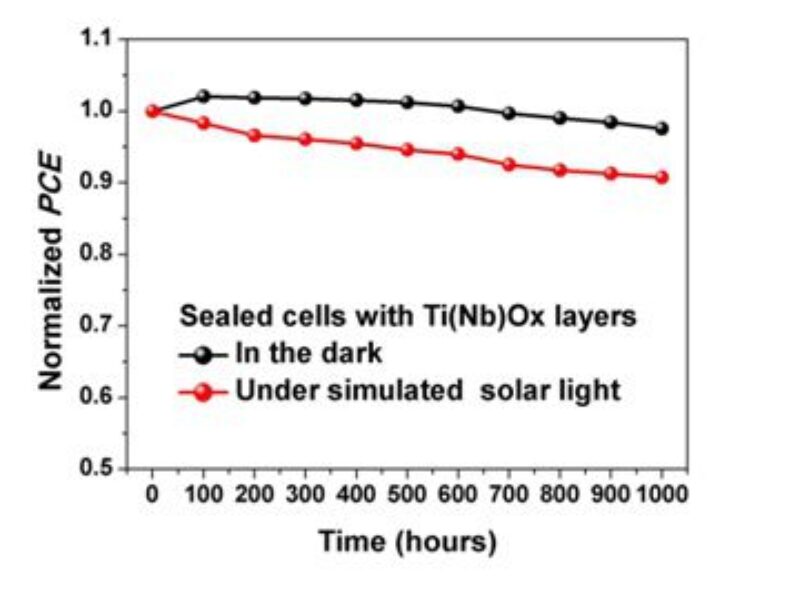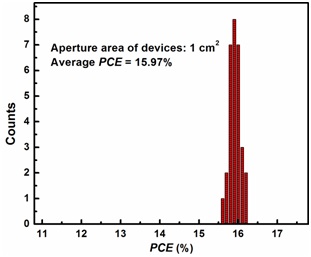
Inorganic materials boost perovskite solar cell durability and efficiency
The research group led by Dr. Liyuan Han, Director of the Photovoltaic Materials Unit, developed high efficiency cells that also passed the durability test (exposure to AM 1.5G 100 mW/cm2 sunlight for 1,000 hours), which is considered to be a basic criterion for practical use. The achievements were made by replacing the conventional organic materials with inorganic materials as the electron and hole extraction layers of the solar cells.
High efficiency perovskite solar cells have often been reached with poor stability and a small area typically less than 0.1 cm2. As such a small device size is prone to induce measurement errors, an obligatory minimum cell area of >1 cm2 is required for certified PCEs to be recorded in the standard ‘Solar Cell Efficiency Tables’ that allows the comparison of competing technologies. Therefore, in order to realize practical use of perovskite solar cells, it is urgent to conduct studies using larger cells and attain more reliable PCEs.

To solve these issues, the research group first replaced the conventional organic materials with robust inorganic materials for use in electron and hole extraction layers. Because these layers fabricated with inorganic metal oxide materials have high electrical resistance, it was necessary to reduce the thickness of the layers to several nanometers. As the area of the thin layers increases, the occurrence of defects called pinholes also increases, leading to decreased PCEs. To deal with this problem, the research group increased the electrical conductivity of these layers by more than 10 times through heavily doping in both electron and hole extraction layers. In this way, the group fabricated layers that have fewer pinholes over wide areas and are applicable at thicknesses of up to 10 to 20 nm. Using the layers, a PCE of 16% was repeatedly attained while employing cells that were greater than 1 cm2. The use of inorganic materials both in electron and hole extraction layers contributed to the control of PCE reduction within 10% even after undergoing 1,000 hours of continuous exposure to sunlight at an intensity of 1 sun, demonstrating outstanding reliability.

Based on the results, the group aims to develop more efficient light absorbing material capable of utilizing a greater amount of sunlight and precisely control the interfaces in the devices, for achieving higher PCEs and stability.
Reference
W. Chen, Y. Wu, Y. Yue, J. Liu, W. Zhang, X. Yang, H. Chen, E. Bi, A. Islam, M. Gratzel and L. Han (2015) Efficient and stable large-area perovskite solar cells with inorganic charge-extraction layers. Science
Related articles and links:
https://dx.doi.org/10.1126/science.aad1015
News articles:
Perovskite advance targets long-wavelength sunlight to boost solar cell efficiency
Ultra-thin perovskite nanocrystals enable tunable, energy-efficient LEDs
Cheaper ultrathin perovskite solar cells target commerical viability
 If you enjoyed this article, you will like the following ones: don't miss them by subscribing to :
eeNews on Google News
If you enjoyed this article, you will like the following ones: don't miss them by subscribing to :
eeNews on Google News




